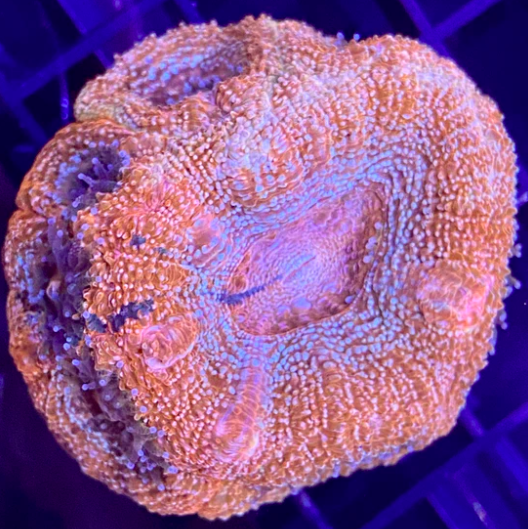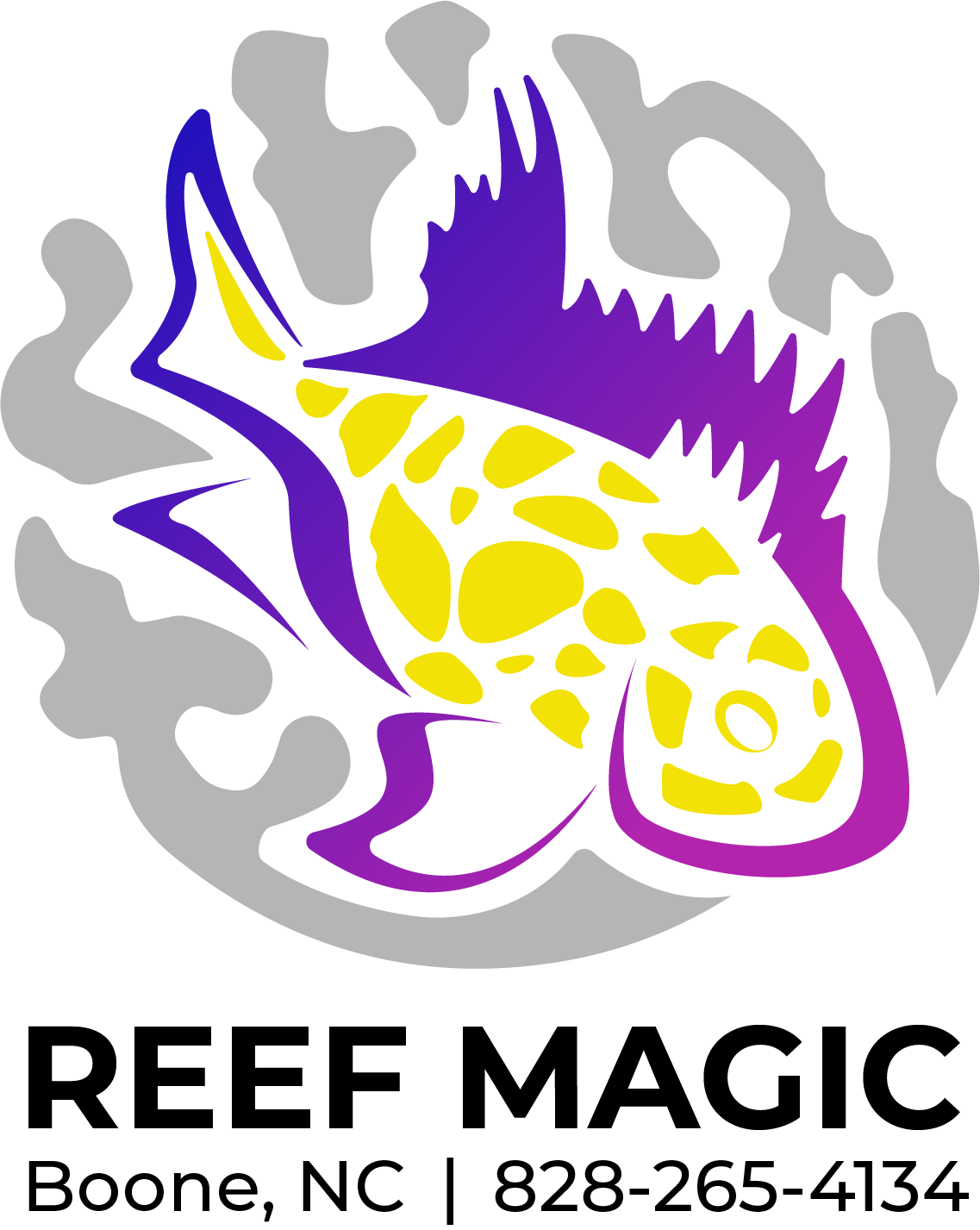 Image 1 of 2
Image 1 of 2

 Image 2 of 2
Image 2 of 2



Bowerbanki- Space Fog
Bowerbanki Coral (Homophyllia bowerbanki), known for its vibrant colors and large polyps, is a popular and relatively hardy coral in the reef aquarium hobby. Here are the detailed care requirements for Bowerbanki Coral:
Tank Setup
Tank Size: Bowerbanki Corals can thrive in both small and large tanks. A minimum of 20 gallons is recommended for stability.
Placement: Place Bowerbanki Corals on the substrate or lower areas of the tank. They can be placed on a rock structure, but ensure they have enough space for expansion.
Water Parameters
Temperature: Maintain a stable temperature between 75-80°F (24-27°C).
Salinity: Keep the salinity at 1.024-1.026 specific gravity.
pH: Maintain a pH level between 8.1 and 8.4.
Alkalinity: Keep alkalinity between 8-12 dKH.
Calcium: Maintain calcium levels between 400-450 ppm.
Magnesium: Keep magnesium levels between 1250-1350 ppm.
Nitrates and Phosphates: Aim for low nitrate levels (below 5 ppm) and phosphate levels (below 0.03 ppm) to prevent algae growth and maintain coral health.
Lighting
Moderate Lighting: Bowerbanki Corals thrive under moderate lighting conditions. LEDs with adjustable intensity are ideal. They do well under T5 and metal halide lighting as well.
Light Duration: Provide a 10-12 hour light cycle to mimic natural daylight patterns.
Water Flow
Moderate Flow: Bowerbanki Corals prefer moderate water flow. Too much flow can cause them to retract their polyps, while too little flow can lead to detritus buildup. Adjust powerheads and wavemakers to create a gentle, indirect flow.
Feeding
Photosynthesis and Feeding: While Bowerbanki Corals derive some of their energy from photosynthesis through their symbiotic zooxanthellae, they also benefit from direct feeding.
Types of Food: Feed them small meaty foods like mysis shrimp, brine shrimp, copepods, and coral-specific pellets or powders. Target feeding with a turkey baster or pipette is effective.
Feeding Frequency: Feed Bowerbanki Corals 2-3 times a week to promote growth and vibrant coloration.
Maintenance
Water Quality: Regular water changes (10-20% biweekly) help maintain water quality and replenish essential trace elements.
Testing: Regularly test water parameters to ensure they remain within the optimal range. Adjust as necessary to maintain stability.
Pest Control: Inspect Bowerbanki Corals for pests such as flatworms or nudibranchs. Use a coral dip treatment if needed to remove pests before introducing new corals to the tank.
Compatibility
Peaceful Tank Mates: Bowerbanki Corals are generally peaceful and can coexist with other corals and reef-safe fish. However, they have sweeper tentacles that can sting nearby corals, so provide adequate space to prevent aggression.
Avoid Aggressive Corals: Keep Bowerbanki Corals away from aggressive or fast-growing corals that might overshadow or sting them.
Additional Considerations
Fragging: Bowerbanki Corals can be propagated through fragging. Use a sharp coral saw to cut the coral into smaller pieces, ensuring each piece has at least one polyp. Allow the frags to heal in a separate area before reintroducing them to the main tank.
Acclimation: When introducing Bowerbanki Corals to your tank, acclimate them slowly to prevent shock. Use the drip acclimation method to gradually adjust them to the tank's water parameters.
Observation: Regularly observe the coral for signs of stress or disease. Healthy Bowerbanki Corals will display full, vibrant polyps.
By providing the right conditions, regular feeding, and careful maintenance, Bowerbanki Corals can thrive and add stunning colors to your reef aquarium.
Bowerbanki Coral (Homophyllia bowerbanki), known for its vibrant colors and large polyps, is a popular and relatively hardy coral in the reef aquarium hobby. Here are the detailed care requirements for Bowerbanki Coral:
Tank Setup
Tank Size: Bowerbanki Corals can thrive in both small and large tanks. A minimum of 20 gallons is recommended for stability.
Placement: Place Bowerbanki Corals on the substrate or lower areas of the tank. They can be placed on a rock structure, but ensure they have enough space for expansion.
Water Parameters
Temperature: Maintain a stable temperature between 75-80°F (24-27°C).
Salinity: Keep the salinity at 1.024-1.026 specific gravity.
pH: Maintain a pH level between 8.1 and 8.4.
Alkalinity: Keep alkalinity between 8-12 dKH.
Calcium: Maintain calcium levels between 400-450 ppm.
Magnesium: Keep magnesium levels between 1250-1350 ppm.
Nitrates and Phosphates: Aim for low nitrate levels (below 5 ppm) and phosphate levels (below 0.03 ppm) to prevent algae growth and maintain coral health.
Lighting
Moderate Lighting: Bowerbanki Corals thrive under moderate lighting conditions. LEDs with adjustable intensity are ideal. They do well under T5 and metal halide lighting as well.
Light Duration: Provide a 10-12 hour light cycle to mimic natural daylight patterns.
Water Flow
Moderate Flow: Bowerbanki Corals prefer moderate water flow. Too much flow can cause them to retract their polyps, while too little flow can lead to detritus buildup. Adjust powerheads and wavemakers to create a gentle, indirect flow.
Feeding
Photosynthesis and Feeding: While Bowerbanki Corals derive some of their energy from photosynthesis through their symbiotic zooxanthellae, they also benefit from direct feeding.
Types of Food: Feed them small meaty foods like mysis shrimp, brine shrimp, copepods, and coral-specific pellets or powders. Target feeding with a turkey baster or pipette is effective.
Feeding Frequency: Feed Bowerbanki Corals 2-3 times a week to promote growth and vibrant coloration.
Maintenance
Water Quality: Regular water changes (10-20% biweekly) help maintain water quality and replenish essential trace elements.
Testing: Regularly test water parameters to ensure they remain within the optimal range. Adjust as necessary to maintain stability.
Pest Control: Inspect Bowerbanki Corals for pests such as flatworms or nudibranchs. Use a coral dip treatment if needed to remove pests before introducing new corals to the tank.
Compatibility
Peaceful Tank Mates: Bowerbanki Corals are generally peaceful and can coexist with other corals and reef-safe fish. However, they have sweeper tentacles that can sting nearby corals, so provide adequate space to prevent aggression.
Avoid Aggressive Corals: Keep Bowerbanki Corals away from aggressive or fast-growing corals that might overshadow or sting them.
Additional Considerations
Fragging: Bowerbanki Corals can be propagated through fragging. Use a sharp coral saw to cut the coral into smaller pieces, ensuring each piece has at least one polyp. Allow the frags to heal in a separate area before reintroducing them to the main tank.
Acclimation: When introducing Bowerbanki Corals to your tank, acclimate them slowly to prevent shock. Use the drip acclimation method to gradually adjust them to the tank's water parameters.
Observation: Regularly observe the coral for signs of stress or disease. Healthy Bowerbanki Corals will display full, vibrant polyps.
By providing the right conditions, regular feeding, and careful maintenance, Bowerbanki Corals can thrive and add stunning colors to your reef aquarium.





